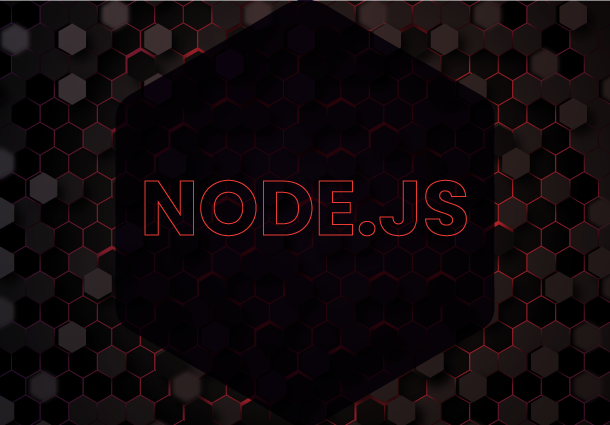The Transformative Impact of Serverless Node.js on Application Development
The idea behind serverless architecture has turned into a distinct advantage in the quickly changing field of web development, overturning laid-out ideas and changing the way applications are developed and implemented. Node.js stands apart among the large number of technologies that have embraced this change in outlook as a powerful and flexible runtime that coordinates flawlessly with serverless frameworks to make applications that are effective and versatile. This book is an asset for developers, architects, and tech enthusiasts who need to utilize serverless Node.js’ capacities to make versatile, responsive, and affordable applications while also taking advantage of serverless computing’s advantages. The trip starts with a fundamental perception of serverless architecture, explaining the ideas and benefits that drive its utilization. The nuances of Node.js will be investigated by readers, who will find out about its event-driven, non-blocking I/O model and how well it fits with the serverless worldview. Using real-world examples, the book shows how Node.js empowers developers to create effective, modular, and deployable functions that are great for serverless conditions.
The nuances of Node.js will be investigated by readers, who will find out about its event-driven, non-blocking I/O model and how well it fits with the serverless worldview. Using real-world examples, the book shows how Node.js empowers developers to create effective, modular, and deployable functions that are great for serverless conditions.
Significant subjects like developing serverless capabilities, integrating with notable serverless providers, and best practices for augmenting effectiveness and economy will be generally canvassed exhaustively as we set out on this examination. The viability of the Node. js-serverless pair in a scope of scenarios, from small-scale projects to enterprise-level applications, will be demonstrated through true use cases and contextual analyses. Our goal is to provide readers with the information and abilities expected to design, create, and execute Node.js serverless applications, empowering them to understand the maximum capacity of these tools in the formation of profoundly responsive, adaptable, and versatile digital solutions. No matter what your level of experience with serverless computing, this book is an extremely valuable device for understanding how the field of modern web development is evolving.
Decoding the Inner Workings of Serverless Node and Its Operational Framework
A computing paradigm known as “serverless node” empowers developers to create and implement applications without stressing over keeping up with ordinary server infrastructure. Serverless Node, when utilized related to the notable JavaScript runtime Node.js, permits developers to focus altogether on creating code, liberating them from worries about server provisioning, scaling, or support. Function as a Service (FaaS) platforms, where applications are partitioned into more modest, free capabilities, are frequently linked to this concept. The concept of event-driven architecture lies at the core of Serverless Node. Functions are run because of specific events or triggers, instead of entire applications running consistently. These Node.js serverless functions are little bits of JavaScript code that complete specific tasks. Events can take various forms, from HTTP requests and database changes to file uploads or scheduled tasks. Developers define functions, upload them to a FaaS platform, and then designate the events that ought to make them execute. This is the standard work process for Serverless Nodes. The related function is progressively provisioned and run upon the occurrence of an event. The fact that developers only pay for the genuine compute resources utilized while the capability is being executed is huge because it offers cost savings over more customary server-based models.
The FaaS platform deals with the versatility, automatic provisioning, and load balancing of the Serverless Node infrastructure. Notable FaaS solutions that work with Node.js are Google Cloud Functions, Azure Functions, and AWS Lambda. These platforms direct the supporting framework, ensuring that the tasks are done in a protected and segregated setting. By utilizing the serverless framework Node.js, developers can make versatile, effective, and reasonable applications by focusing on composing code that responds to specific events instead of agonizing over keeping up with infrastructure. This worldview change in current application development speeds up advancement cycles and smoothes out deployment methods.
Weighing the Options of Embracing Node.js in a Serverless Environment
It tends to be a convincing option for certain applications and development situations to use Serverless Node.js because it has many advantages. Because serverless computing takes out the requirement for server management or provisioning, developers can focus completely on composing code, expanding their agility, and accelerating time to market. Node.js’ event-driven, non-blocking architecture fits in well with the serverless model.  Given its capability with asynchronous tasks, this runtime is ideal for serverless capabilities that are event-driven. Its versatility and lightweight design ensure powerful utilization of assets, improving cost-effectiveness in a serverless climate. Applications with erratic workloads and usage patterns benefit significantly from the serverless framework Node.js. Without requiring human intervention, it keeps up with ideal execution by scaling consequently in response to demand.
Given its capability with asynchronous tasks, this runtime is ideal for serverless capabilities that are event-driven. Its versatility and lightweight design ensure powerful utilization of assets, improving cost-effectiveness in a serverless climate. Applications with erratic workloads and usage patterns benefit significantly from the serverless framework Node.js. Without requiring human intervention, it keeps up with ideal execution by scaling consequently in response to demand.
Moreover, organizations can pay just for the resources utilized during execution on account of serverless platforms’ pay-as-you-go pricing model, which could bring down overall infrastructure costs. Still, it’s important to take the application’s nature into account. Serverless Node.js may not be the most ideal decision for lengthy processes or applications that need continuous associations, even though it is ideally suited for event-driven, stateless functions. To see whether Serverless Node.js fits with their objectives, developers ought to survey the specific requirements and elements of their project and equilibrium the benefits over any expected downsides. The decision to utilize Serverless Node.js eventually boils down to the specific use case, the experience of the development team, and the planned ratio of control, adaptability, and simplicity.
Tracing The Coca-Cola Company’s Journey in Node.js Application Development
Greater scalability, efficiency, and agility have been made conceivable by The Coca-Cola Company’s reception of serverless architecture utilizing Node.js, which has changed its digital infrastructure. Coca-Cola has overhauled its application development strategy by using the serverless framework Node.js to work on overall performance and streamline procedures. Coca-Cola’s serverless applications have been demonstrated to be ideal for Node.js, which is famous for its lightweight and event-driven architecture. Its non-blocking input/output (I/O) model fits in well with the serverless architecture, empowering fast, concurrent request handling. This ensures the best utilization of assets and responsiveness, which are fundamental given how dynamic and high-demand Coca-Cola’s operations are.
The shortfall of traditional server management issues is a significant advantage of serverless architecture. Developers are allowed to focus completely on composing code and making state-of-the-art solutions since Coca-Cola is as of now not liable for provisioning or overseeing servers. By utilizing this strategy, operational overhead is extraordinarily diminished and an agile development cycle is supported. One of the primary benefits of serverless figuring is its effortless scalability, which Coca-Cola has utilized to deal with a scope of workloads. Additional assets are consequently provisioned during periods of popularity, ensuring continuous service provisioning. Then again, resources lessen during seasons of decreased demand, amplifying cost-effectiveness.
Additionally, the execution of serverless architecture is reliable with Coca-Cola’s environmental mission. The organization limits its environmental effect by lessening energy utilization and carbon impression related to conventional server setups by assigning assets on-demand and automatically de-provisioning when not in use. Coca-Cola’s shift to Node.js serverless applications is a determined move toward a digital infrastructure that is more ecologically friendly, versatile, and efficient. The organization can fulfill the needs of a powerful market while focusing on development and sustainability because of the mix of serverless computing and Node.js.
Comparing and Contrasting Frameworks for Unleashing the Full Potential of Serverless Applications
Selecting the appropriate framework for Node.js serverless application development is fundamental for adaptable and compelling development. Azure Functions and AWS Lambda are two popular frameworks here. The Serverless Application Model (SAM) framework is accessible through Amazon Web Services’ serverless computing service, AWS Lambda. SAM offers a layout-based technique that makes serverless application organization and management on AWS simpler. Since it incorporates consistently with various AWS services and supports Node.js, developers can undoubtedly make versatile and reliable applications. Notwithstanding, Azure Functions, a component of the Microsoft Azure cloud platform, offers an interesting arrangement of tools for making Node.js serverless applications. Azure Functions frees developers from the weight of managing infrastructure so they can focus on composing code. It is versatile for different use cases since it offers trigger help and reconciliation with Azure services.
developers can undoubtedly make versatile and reliable applications. Notwithstanding, Azure Functions, a component of the Microsoft Azure cloud platform, offers an interesting arrangement of tools for making Node.js serverless applications. Azure Functions frees developers from the weight of managing infrastructure so they can focus on composing code. It is versatile for different use cases since it offers trigger help and reconciliation with Azure services.
To look at these frameworks, one should assess aspects like vendor lock-in, community support, ease of use, and integration capabilities. The SAM framework is proven and factual and partakes in the upsides of a laid-out AWS ecosystem, whereas Azure Functions succeeds at coordinating with other Azure services consistently. The choice between these frameworks eventually boils down to the specific necessities of the project, the team’s level of experience, and the cloud provider of choice. Each framework enjoys benefits and burdens, however both work with the faster development of Node.js serverless applications.
Partnering with Pattem Digital for Unmatched Development Services
Delivering innovative solutions rapidly and precisely, our Node.js development company is recognized for its unparalleled aptitude. Our talented team utilizes Node.js to foster superior performance and adaptable applications that are customized to your particular necessities. Consumer satisfaction is our main concern, and we try to communicate clearly and promptly at every stage of the development process. You can depend on us to give creative, reliable, and successful Node.js solutions that will assist your organization with prevailing in the cutthroat digital market.





